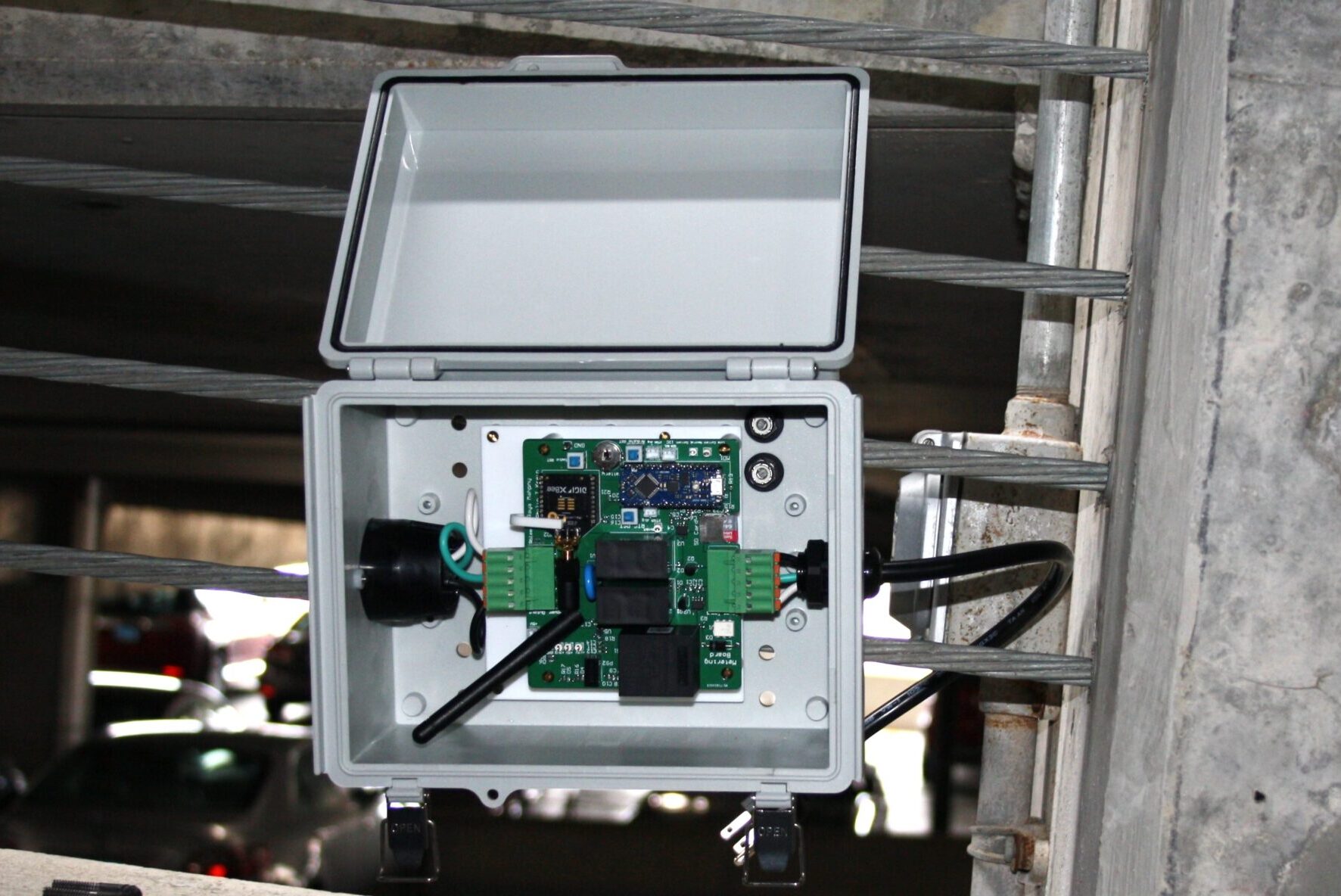
A view of a new EV charging box installed in Lot B4.A sustainable transportation initiative supported by the Institute for Sustainability, Energy, and Environment (iSEE) is conducting an on-campus research project on electric vehicle (EV) charging as a part of its overall project plan. This three-part study will help gather direct user data related to EV charging on campus, using a readily available charging source: AC outlets.
Much of the emerging EV charging infrastructure discussion emphasizes fast charging, in which a battery pack recovers roughly half of its capacity in 20 to 30 minutes. Sometimes this is called Level 3 or DC fast charging; one vendor calls them “superchargers.” Level 3 infrastructure is inherently expensive, with upwards of $15,000 for devices and much more to add electrical capacity and connections.

Users pay several times the cost of energy in exchange for speed. Fast chargers can be found along major highways.Most of the units now seen around campus are Level 2 devices, which support the typical internal EV charger to recharge the battery in two or three hours at power levels consistent with an electric oven or clothes dryer.
These are also expensive – roughly $2,000 per unit. Users still need to pay a premium over the cost of energy to recover equipment and installation costs.This study, in contrast, explores familiar, basic 120V AC outlets as a charging infrastructure alternative.
Sometimes called Level 1 charging, it takes many hours to recharge an EV battery from this basic infrastructure. On the other hand, commuters park their cars all day, so this duration is not necessarily a problem. The costs match the retail cost of electrical energy, since the infrastructure does not impose any special requirements.
In the first phase, the iSEE project team has designed data collection hardware to obtain charging data for basic infrastructure charging, with emphasis on commuters holding parking permits and parking all day. The team is working with Campus Parking and Facilities & Services to support the deployment of this data collection capability in Lot B4, the North Campus Parking Structure, to gather initial data in phase one.For the initial tests, eight parking spaces dispersed throughout Lot B4 have been set up with metered receptacles.
Parking clients simply park, plug in with their own cables, and charge their EVs at no added cost.The iSEE budget is covering all setup costs and energy cost during the study. The eight units will be in position for about eight weeks, gathering data in one-minute intervals about current, voltage, power, and energy.
The iSEE team will download data approximately weekly. The collection units have sufficient internal storage for the entire test duration. There is no cost to users and no personal data is collected.
Phase two of the project will involve about 30 data collection boxes dispersed around campus. As future phases of the experiment begin, this page will be updated. Project FAQsHow can I participate in this program?Any permit holder in lot B4 with a plug-in vehicle can park in one of the designated spaces and connect to the data collection box on a first-come first-served basis.
Each space will be marked with a sign. There are no costs, signup requirements, or special requirements. Just park and plug in.
The number of spaces is limited (eight), and we apologize for limited availability. Will my personal data be collected? What data are you collecting?The units collect and record electrical data (voltage, current, power, energy) and time of day. No other information is collected, no information about vehicles will be gathered, and no personal data is measured or recorded.
What equipment do I need to charge in B4?Most electrical vehicles are equipped with a “convenience charge cable” that can plug into a standard 120 V receptacle. This is the only need. Where are each of these parking spots in B4?The parking spaces are dispersed across the B4 levels for permit holders.
Three are on level 2, two are on level 3, one is on level 4, and two are in the area designated for student parking leading to level 5. Can I park in this charging spot all day?Yes, there are no restrictions on duration. Is it safe to charge my car with this system?The charge source is a standard 120 V receptacle.
The internal data collection equipment is isolated from the power flow, so the safety is the same as for standard outlets. Can I charge my scooter in these spots?Lot B4 is not authorized for scooter parking. This program is for vehicle permit holders.
.















